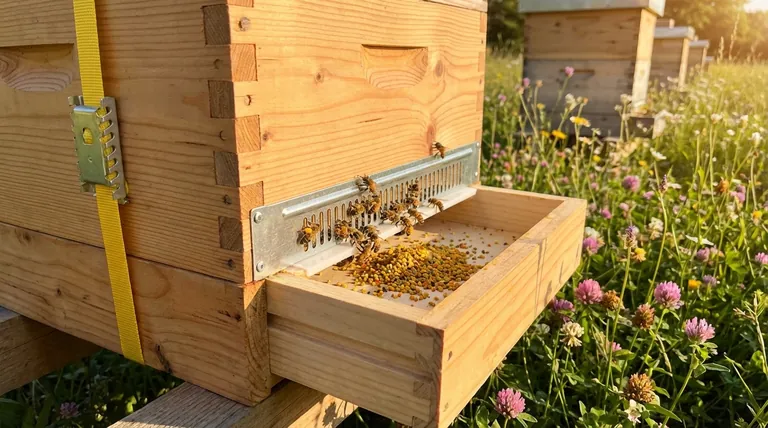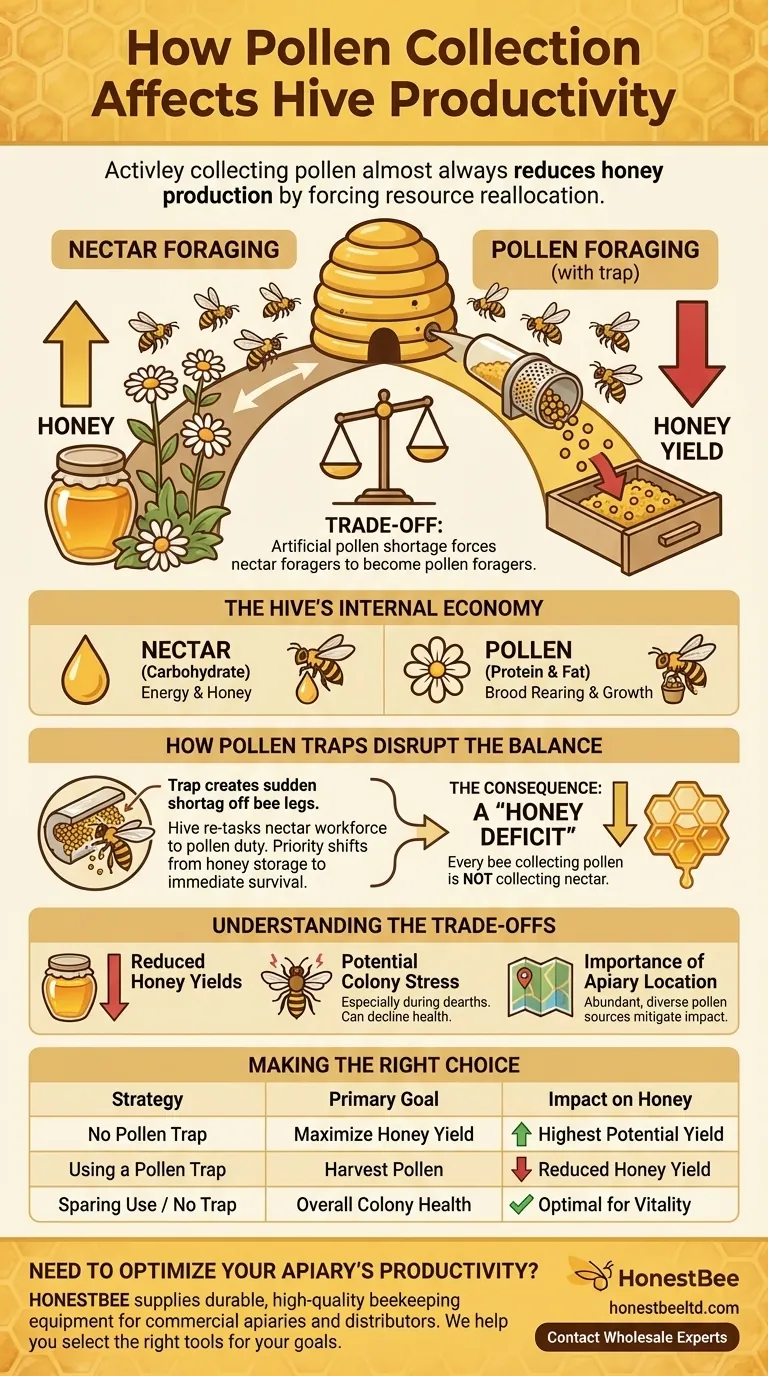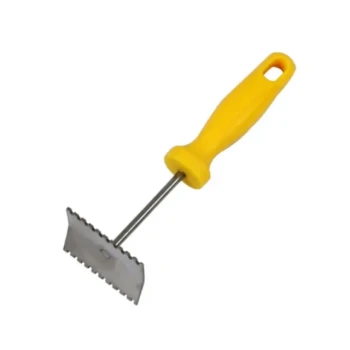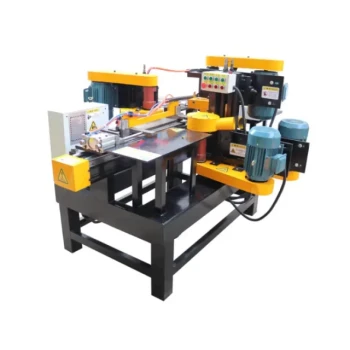In short, actively collecting pollen from a hive almost always reduces its honey production. This happens because you are forcing the colony to reallocate its resources. To compensate for the pollen being removed by a trap, the hive diverts bees from collecting nectar to collecting pollen, directly impacting the amount of honey that can be produced.
The core issue is a fundamental trade-off in the colony's workforce. By creating an artificial pollen shortage, you are redirecting bee labor that would otherwise be used to gather nectar, the raw material for honey. This changes the hive's primary objective from surplus storage to immediate protein replenishment.

The Hive's Internal Economy: Nectar vs. Pollen
A Clear Division of Labor
A honey bee colony operates with a sophisticated division of labor. Forager bees specialize in collecting either nectar (the carbohydrate source for energy and honey) or pollen (the protein and fat source for raising new bees).
The Critical Role of Pollen
Pollen is the lifeblood of the next generation. It is mixed with secretions to create "bee bread," which is the essential food for larvae. Without a steady supply of pollen, a colony cannot raise brood, replace its aging population, or grow.
The Purpose of Nectar
Nectar is the colony's fuel. Bees consume it for immediate energy and convert the surplus into honey. Honey is a stable, dense food store that allows the colony to survive periods of bad weather, winter, or a lack of flowering plants.
How Pollen Traps Disrupt the Balance
Creating an Artificial Shortage
A pollen trap works by scraping the pollen pellets off the legs of returning forager bees as they enter the hive. From the colony's perspective, this creates a sudden and severe pollen shortage, signaling an urgent threat to its ability to raise young.
The Colony's Inevitable Response
The hive's internal communication system immediately registers the deficit. In response, it re-tasks a portion of its nectar-foraging workforce to become pollen foragers. The colony's priority shifts from long-term energy storage (honey) to immediate survival and growth (pollen).
The Consequence: A "Honey Deficit"
This reallocation of labor is a zero-sum game. Every bee that is sent to collect pollen is a bee that is not collecting nectar. This directly reduces the raw material coming into the hive for honey production, resulting in a lower honey yield.
Understanding the Trade-offs
Reduced Honey Yields
This is the most direct and predictable trade-off. If you choose to harvest pollen, you must accept that the same hive will produce less honey than it would have otherwise. The two goals are in direct competition for the same labor pool.
Potential Stress on the Colony
Aggressive pollen trapping can put significant stress on a colony, especially if done during a "nectar dearth" or in a location with poor natural forage. If the bees cannot collect enough pollen to meet both your harvesting needs and their own brood-rearing needs, the colony's health and population can decline.
The Importance of Apiary Location
The quality of your apiary site is a critical factor. A location with abundant and diverse pollen sources will allow a colony to better withstand the pressure of a pollen trap. In contrast, a hive in an area with poor forage is far more sensitive to having its pollen stores depleted.
Making the Right Choice for Your Goal
When deciding whether to collect pollen, you must be clear about your primary objective as a beekeeper.
- If your primary focus is maximizing honey production: Do not use pollen traps. Allow the colony to manage its own resources to dedicate the maximum workforce to nectar collection.
- If your primary focus is harvesting pollen: Accept a lower honey yield as a necessary consequence. Only use traps on strong, healthy hives during periods of intense natural pollen flow to minimize stress.
- If your primary focus is overall colony health: Use pollen traps sparingly, if at all. Prioritize choosing an excellent apiary location that provides diverse and abundant natural forage for both nectar and pollen.
Understanding this delicate balance allows you to work with your colony's natural instincts, not against them.
Summary Table:
| Pollen Collection Strategy | Primary Goal | Impact on Honey Production |
|---|---|---|
| No Pollen Trap | Maximize Honey Yield | Highest Potential Yield |
| Using a Pollen Trap | Harvest Pollen | Reduced Honey Yield |
| Sparing Use / No Trap | Overall Colony Health | Optimal for Hive Vitality |
Need to Optimize Your Apiary's Productivity?
As a commercial beekeeper or distributor, understanding the balance between pollen and honey production is critical for your bottom line. The right equipment and strategy are essential.
HONESTBEE supplies the durable, high-quality beekeeping supplies and equipment that commercial apiaries and distributors rely on. We can help you select the right tools for your specific goals, whether you're focused on maximizing honey yields or diversifying your product line with pollen.
Let's discuss how to build a more productive and profitable operation. Contact our wholesale experts today for personalized advice and pricing.
Visual Guide

Related Products
- Professional Galvanized Hive Strap with Secure Locking Buckle for Beekeeping
- Professional Long-Handled Silicone Honey Scraper for Beekeeping
- Professional Wide Blade Honey Scraper for Beekeeping and Honey Processing
- Stainless Steel Honey Press Wax Press with Tank
- Stainless Steel Scraper for Metal Queen Bee Excluders
People Also Ask
- What are the types of Emlocks available? Choose the Right Strap for Hive Security
- How should a cam buckle strap be installed for optimal performance? Master the Leverage for Maximum Tension
- Can straps with hook ends be used for beehives? A Guide to Secure Hive Management
- What is the advantage of using cam buckle straps? Secure Your Load Fast with Simple, Safe Tensioning
- What is the best length for straps used around beehives? Why 12 Feet is the Industry Standard



















